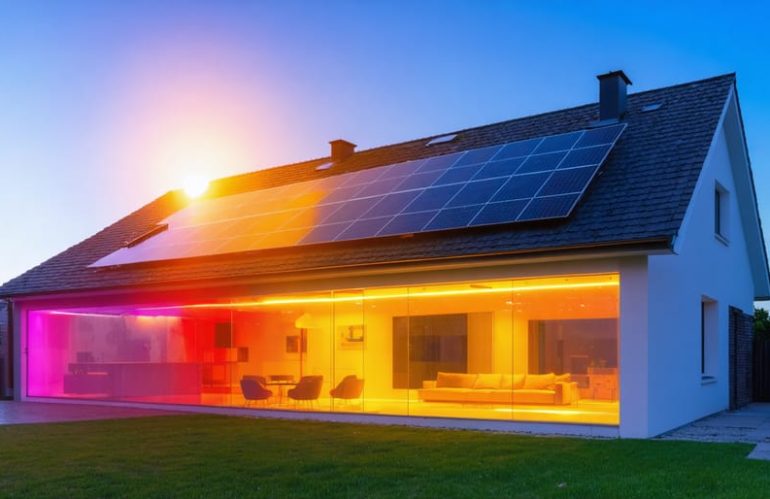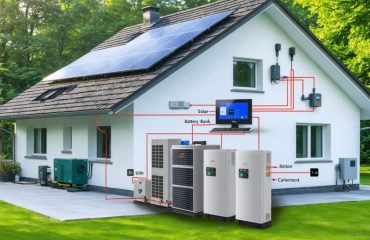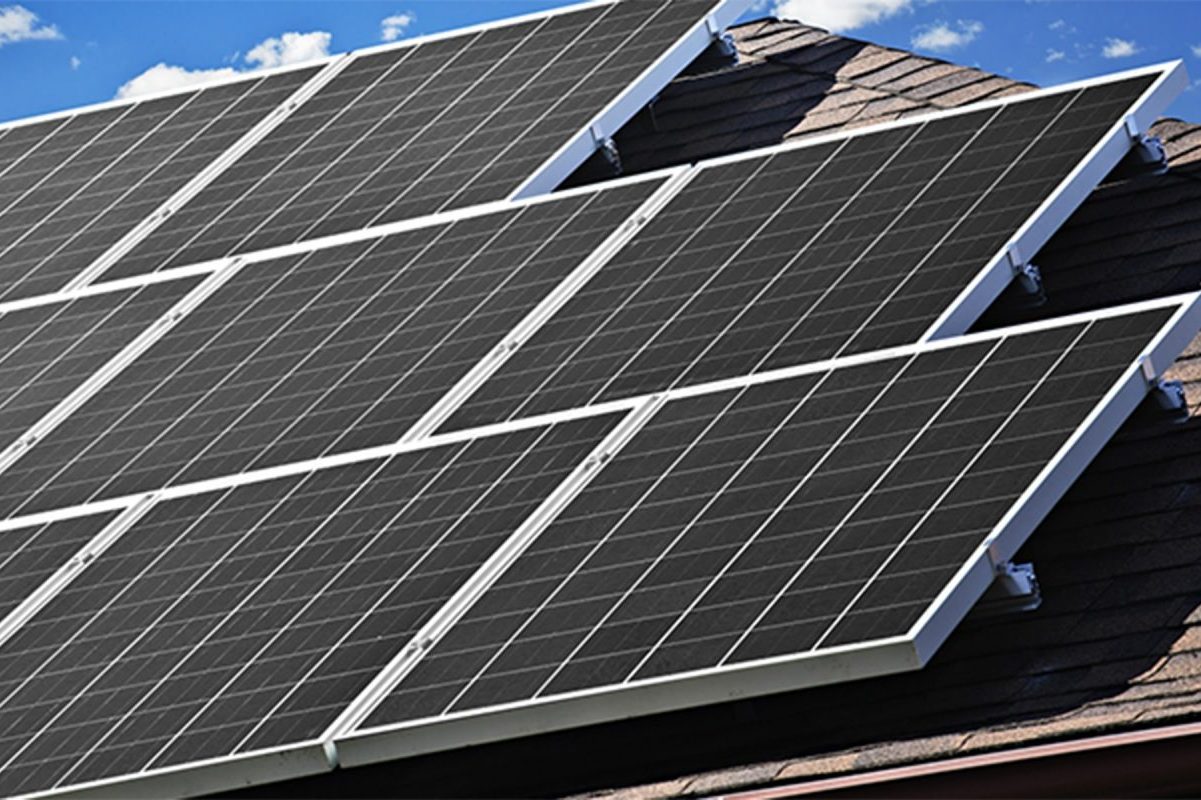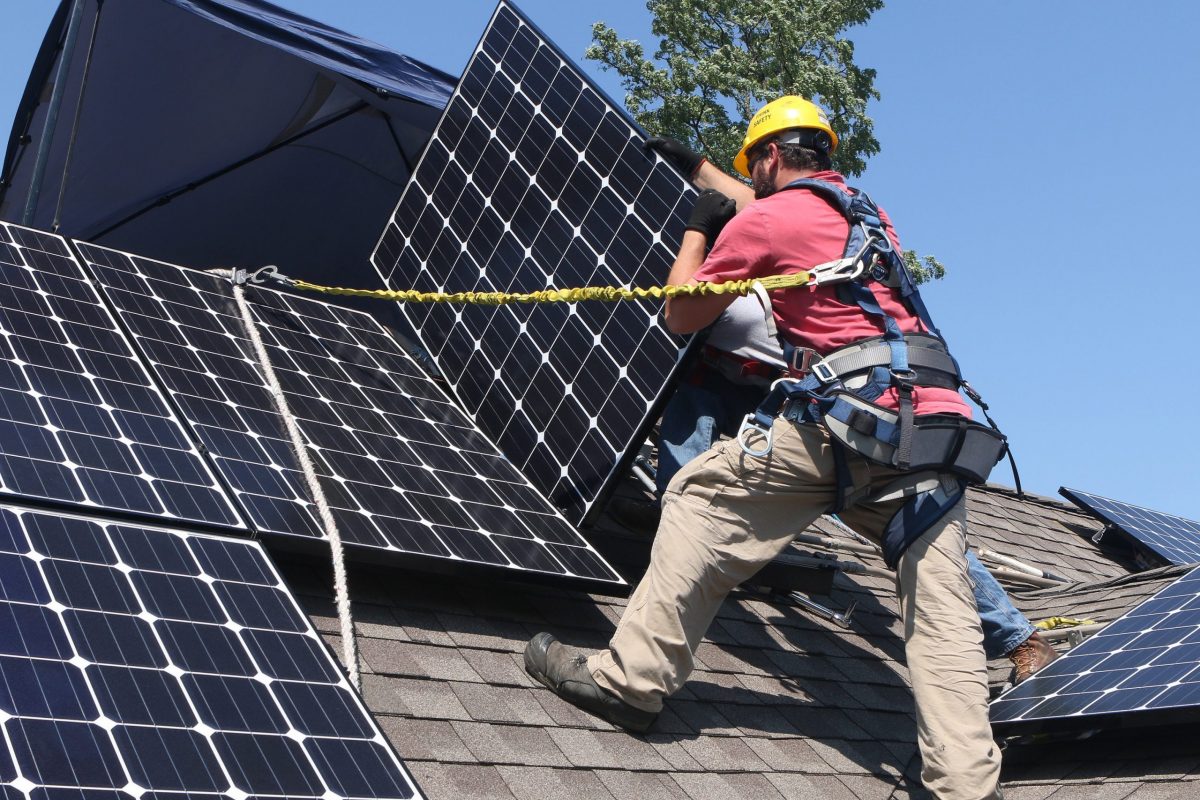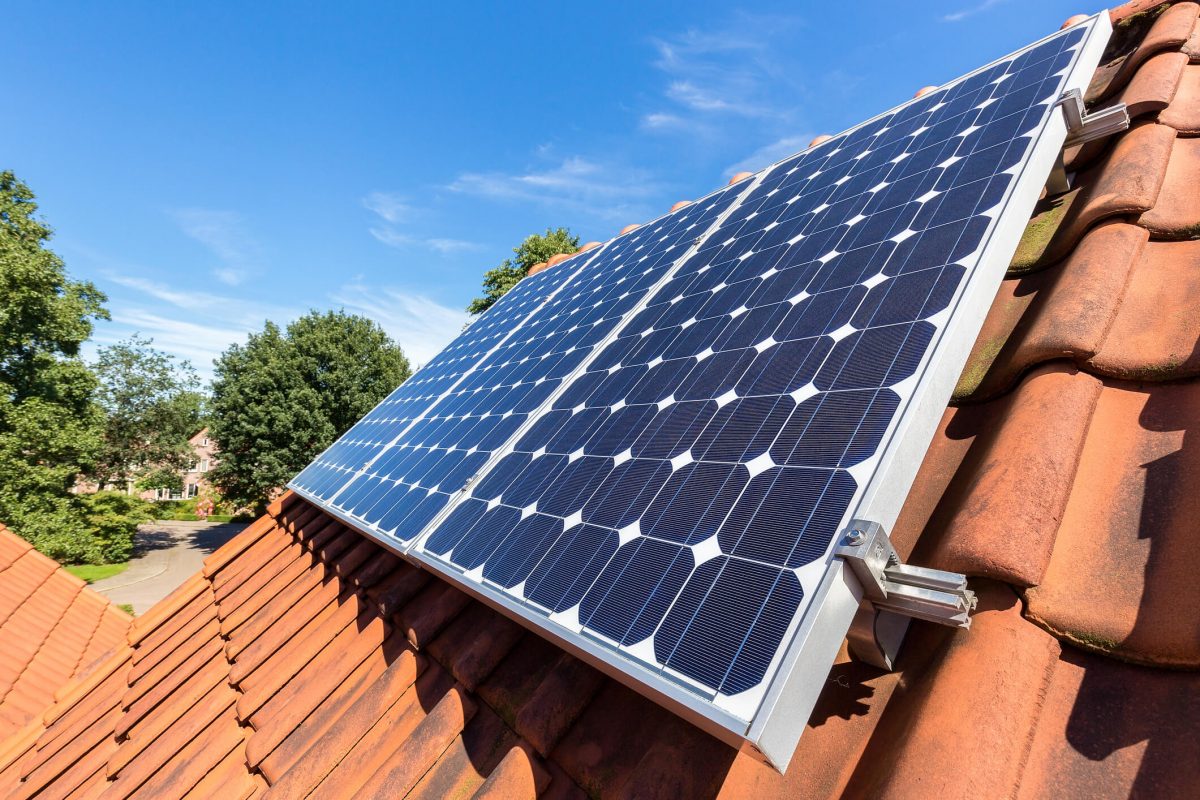Transform your home’s energy future with thermal storage solar systems – the groundbreaking technology that enables 24/7 solar power availability through innovative heat-capturing solutions. Unlike traditional solar panels that stop working at sunset, thermal storage systems capture excess daytime solar energy in specialized materials like molten salts or phase-change compounds, releasing this stored heat to generate electricity when needed most.
This revolutionary approach to solar power solves the intermittency challenge that has long limited renewable energy adoption. By storing energy as heat rather than in expensive batteries, thermal storage systems offer a cost-effective solution for maintaining consistent power output, reducing utility bills by up to 40%, and ensuring energy independence regardless of weather conditions.
Modern thermal storage technologies have evolved to become remarkably efficient, compact, and suitable for residential installation. Whether integrated with existing solar arrays or installed as part of a new system, this technology represents the missing link in making solar power a reliable, around-the-clock energy solution for homeowners committed to sustainable living.
What Makes Thermal Solar Storage Different?
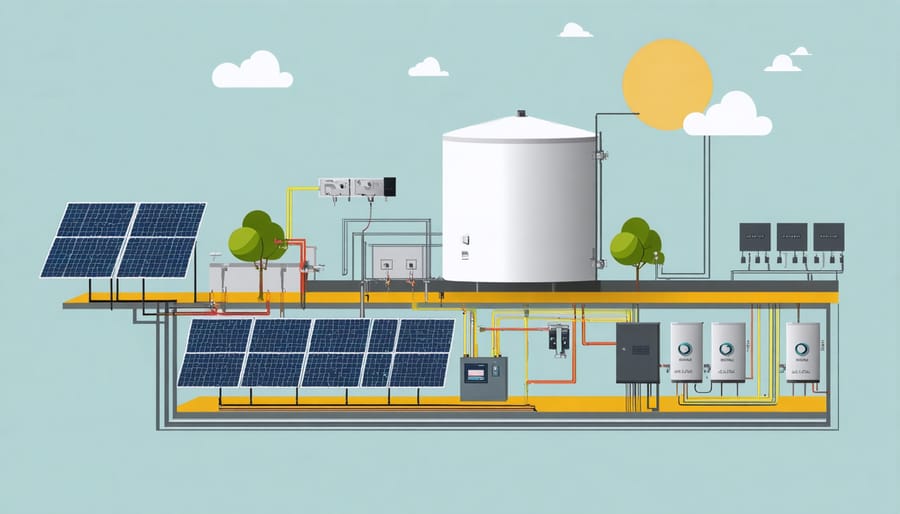
The Heat-Banking Advantage
Think of thermal storage as a savings account for solar energy. Instead of letting excess heat go to waste during peak sunlight hours, thermal storage systems capture and bank this valuable energy for later use. The process is remarkably straightforward: specialized materials, often in the form of liquid or solid mediums, absorb heat from solar collectors throughout the day.
These storage materials are carefully selected for their heat-retention properties. Common options include water tanks, molten salts, or even specially engineered phase-change materials that can store and release large amounts of heat while maintaining a consistent temperature. When the sun sets or clouds roll in, this banked heat can be released to warm your home, heat water, or even power certain cooling systems.
What makes thermal storage particularly effective is its efficiency – up to 90% of collected heat can be stored and used later. This means your solar investment works harder for you, providing reliable heating and cooling even when the sun isn’t shining. For homeowners, this translates to more consistent comfort and lower energy bills throughout the year.
Beyond Traditional Batteries
While traditional batteries have long been the go-to solution for solar energy storage, thermal storage offers unique advantages that set it apart from conventional energy storage technologies. Unlike chemical batteries that degrade over time, thermal storage systems maintain their efficiency throughout their lifespan, often lasting 20-30 years with minimal maintenance.
Thermal storage also excels in environmental friendliness, using natural materials like water, sand, or molten salts instead of potentially harmful chemical compounds. This makes it a more sustainable choice for environmentally conscious homeowners. While chemical batteries offer quick response times for power delivery, thermal storage provides steady, reliable heat distribution that’s particularly effective for space heating and hot water needs.
Cost-wise, thermal storage systems typically have lower lifetime costs compared to chemical batteries, despite similar upfront investments. They don’t require regular replacement of components and are less susceptible to price fluctuations in raw materials. This makes them an increasingly attractive option for homeowners looking to maximize their solar investment while minimizing long-term expenses.
Your Home’s Built-In Temperature Control
Year-Round Climate Management
One of the most impressive features of thermal storage solar systems is their ability to maintain comfortable temperatures throughout the year. During winter months, these systems capture and store excess solar heat during sunny days, releasing it gradually to warm your home when temperatures drop at night. This process significantly reduces the need for conventional heating systems and helps maintain steady indoor temperatures.
In summer, the system works in reverse, acting as a cooling mechanism. It can store “coolth” – the cooling capacity generated during nighttime or by running air conditioning during off-peak hours. This stored cooling energy can then be used during the hottest parts of the day, reducing the strain on your air conditioning system and lowering peak energy demands.
The versatility of thermal storage extends beyond daily temperature management. These systems can store energy for several days, helping maintain comfortable indoor conditions during extended periods of unfavorable weather. For example, heat stored during a sunny weekend can help warm your home through cloudy weekdays.
This year-round climate management capability makes thermal storage particularly valuable in regions with significant temperature variations. By reducing the reliance on traditional HVAC systems, homeowners can enjoy more consistent indoor temperatures while significantly lowering their energy bills and carbon footprint.

Smart Integration with Your Solar System
Integrating thermal storage with your existing solar system creates a powerful combination that maximizes your renewable energy investment. When solar panels generate more electricity than you can immediately use, this excess energy can be directed to heat storage materials like water tanks or phase-change materials, effectively banking that energy for later use.
The integration process is surprisingly straightforward. A smart controller monitors your solar production and household energy consumption in real-time, automatically directing surplus power to your thermal storage system. During peak sunlight hours, this stored heat can be used for immediate hot water needs or saved for evening use, reducing your reliance on grid electricity when solar panels aren’t producing.
What makes this integration particularly clever is its ability to adapt to your daily routines. Modern systems learn your household’s energy patterns, predicting when you’ll need hot water and heating, and adjusting storage accordingly. This predictive capability ensures you have hot water available during peak usage times, even after sunset.
The system also works seamlessly with your home’s existing heating infrastructure. Whether you have radiant floor heating, forced air, or traditional radiators, thermal storage can supplement these systems, reducing the load on your primary heating source during colder months. This integration not only maximizes your solar investment but also provides a reliable backup heating solution during cloudy days or power outages.
Real Cost Benefits for Homeowners
Lower Energy Bills
Thermal storage solar systems can significantly cut your energy costs through efficient energy management and smart utilization. Most homeowners see a 40-70% reduction in their heating and cooling expenses after installation, with payback periods typically ranging from 5-8 years depending on local energy rates and system size.
The cost savings come from multiple sources: reduced peak electricity consumption, improved solar energy utilization, and decreased reliance on traditional HVAC systems. During summer months, thermal storage can reduce air conditioning costs by up to 50% by shifting cooling loads to off-peak hours. In winter, stored thermal energy can supplement heating needs, cutting gas or electric heating bills by 30-60%.
To maximize your storage system ROI, consider factors like local utility rates, available incentives, and your specific energy usage patterns. Many utilities offer time-of-use rates or demand response programs that can further increase your savings. Additionally, federal tax credits and state incentives can reduce initial installation costs by 26-30%, making the investment even more attractive for budget-conscious homeowners.
Available Incentives and Rebates
Several attractive financial incentives are available to homeowners considering thermal storage solar systems. The federal Solar Investment Tax Credit (ITC) offers a 30% tax credit on the total system cost, including both solar panels and thermal storage components. This credit is available through 2032 and can significantly reduce your initial investment.
Many states offer additional tax incentives and rebates specifically for thermal storage installations. For example, California’s Self-Generation Incentive Program (SGIP) provides rebates for energy storage systems, while Massachusetts offers the ConnectedSolutions program that pays homeowners for using their thermal storage during peak demand periods.
Local utilities often provide energy-efficiency rebates and time-of-use rate plans that can maximize your savings with thermal storage. Some power companies offer special rates for customers who shift their energy consumption to off-peak hours using storage systems.
Property tax exemptions are available in several states for renewable energy improvements, including thermal storage installations. Additionally, some municipalities offer expedited permitting and reduced fees for solar thermal storage projects.
Remember to check with your local energy office, utility provider, and tax professional to identify all available incentives in your area, as programs and offerings frequently update.

Installation and Maintenance Simplified
Installing a thermal storage solar system in your home is simpler than you might think, and with proper maintenance, these systems can provide reliable service for 20-30 years. The installation process typically begins with a professional assessment of your home’s solar potential and existing heating system compatibility.
Most installations can be completed within 2-3 days by certified professionals. The process involves mounting solar collectors on your roof or in your yard, installing the storage tank (usually in your basement or utility room), and connecting the system to your existing home heating infrastructure. The storage tanks are well-insulated and designed to minimize heat loss, requiring minimal space while maximizing energy storage capacity.
Maintenance requirements are surprisingly modest. Regular checks include:
– Annual inspection of solar collectors for dust, debris, or damage
– Checking antifreeze levels in closed-loop systems every 3-5 years
– Monitoring pressure gauges and system performance monthly
– Inspecting storage tank insulation annually
– Testing valve operation every six months
Many modern systems come with smart monitoring capabilities that alert you to potential issues before they become problems. This predictive maintenance approach helps prevent unexpected system failures and extends the life of your installation.
For optimal performance, schedule professional maintenance checks every two years. These inspections typically include a thorough system evaluation, cleaning of components, and calibration of controls. Most homeowners can handle routine maintenance tasks like checking pressure readings and keeping collectors clean, but leave technical repairs to certified technicians.
The durability of thermal storage systems means you’ll spend less time on upkeep compared to traditional heating systems. Many components are designed to be modular, making replacements straightforward when needed. With proper care, your thermal storage solar system will provide decades of reliable, efficient heating while requiring minimal attention from you.
Thermal storage solar technology represents a smart investment in your home’s energy future. By capturing and storing solar energy for later use, you can significantly reduce your utility bills while contributing to a cleaner environment. The combination of improved energy independence, lower operating costs, and reduced carbon footprint makes this technology an attractive option for environmentally conscious homeowners. With various system options available and increasing affordability, now is the perfect time to consider integrating thermal storage into your solar setup. Take the first step toward energy independence by consulting with a qualified solar installer to design a system that meets your specific needs. Your wallet – and the planet – will thank you for making this sustainable choice.

